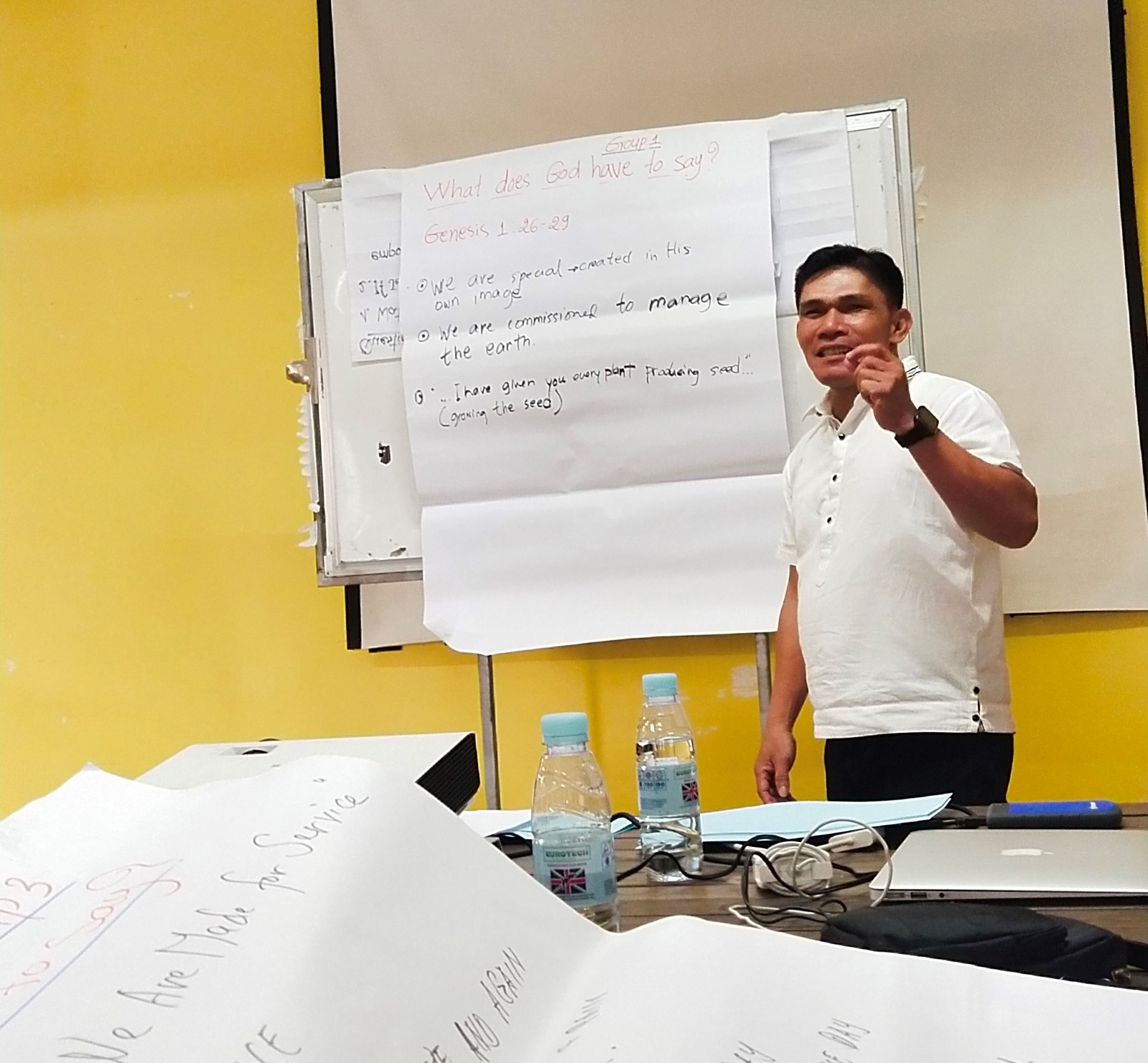News and Updates

Facilitator’s Creativity, the Key to Effective Learning
By Rev. Ruben Bobila
I was so intimidated and overwhelmed by everything about the Church and Community Mobilization (CCM) training in Phnom Penh, Cambodia that I practically froze at the prospect of sharing and participating in it.
I could not talk to both Filipino and Khmer trainees nor could I approach the esteemed facilitators. The language barrier, for one, is a factor. Other factors that hindered my active participation, at least initially, included difference in contexts and cultures.
But the ice-breaker came early and swiftly. I immediately was enthralled by the exciting and memorable opening activity. Then there’s the manner of facilitating the training of trainers (ToT) that totally broke the barriers. It is not an exaggeration to describe it as vibrant and thrilling, thanks to Brother Ry Roeurn, a Cambodian CCM practitioner and facilitator.
Brother Ry’s creative and captivating facilitation skills captured my imagination. That loosened me up. I instantly became an active participant of the four-day training.
After the barriers were broken, the feeling of belongingness was soon established. The bond among the trainees and facilitators developed into a solid relationship.
After the prayer and lively singing of short choruses, we were requested to move out of the training hall for an outdoor game. Ry instructed us to form a circle. He asked everyone to get inside the circle one at a time. By this time, any inhibition had gone away and all the trainees willingly did what was told them. There were jokes from everyone that made the activity fun and lively.
It was an excellent outdoor activity that caught the trainees’ interest. More importantly, it is an effective and efficient way of knowing each other better.
Other Structured Learning Exercises (SLE) that were introduced included the so-called “power clap,” the Umoja way. We used this unique type of clapping after every presentation of an individual or group. Dyads/triads or groupings of twos and threes were also introduced so that a topic could be discussed in a small group before it was presented in a plenary.
The facilitator introduced a simple but creative expectation-checking activity that required the participants to write in meta-cards what was on their mind. This methodology was more effective than just raising your hands and sharing your expectations.
Classroom setting combined with field visit made my learning journey an effective one. Thus, the three-hour ride to a village near the border of Vietnam was truly worth it.
Overall, the training experience in Cambodia was fascinatingly effective. The facilitator’s creative and innovative techniques in facilitating our learning and the friendship and camaraderie among the participants transformed me from a timid wallflower to an active participant who learned so much from this experience.
